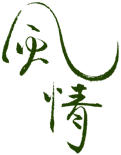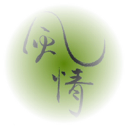good maintenance is all about how you feel

maintenance
Shaping trees and shrubs, topiary and grooming rampant junipers are simple techniques most often overlooked when seeking comfort, privacy or front door curb appeal. Management of plant material will showcase, emphasize de-emphasize or screen homes. Every opportunity exists to bring the patterned rhythmic warmth of the west coast to Calgary and other locales across the Canadian Prairies.
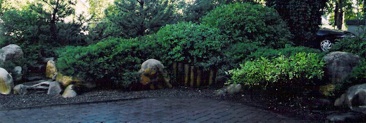
A small yet significant historical insight into our accepted ideas of maintenance: In 1938 there were 138 gardeners of Japanese origin working in the Kitsilano suburb of Vancouver, British Columbia, Canada.

Today, there are less than 50 active Japanese gardeners in the entire Greater Vancouver area.
(if you reside on the west coast, for more information please visit Vancouver Japanese Gardeners Association: http://members.shaw.ca/vjga/)
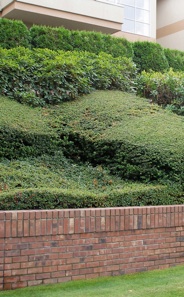
and also the second admonition to
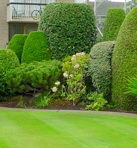
as the greenery use and direction came from the predominantly English employers seeking familiar landscape inter-relationships. Yet, the pruning techniques of English hedges and topiary already existed in Asia, both in bonsai and in topiary.
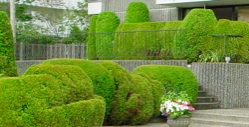
Occasionally in the Pre-war and Internment years, requests for hybridized postcard Japanese gardens were also asked for.
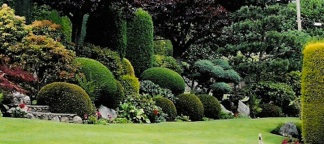
In regard to the etymology of the ‘Japanese garden’ these ‘style’ gardens, in my experience, were nothing new even though they opened a new opportunity for adapting non-Japanese western materials, into the composition that is the Japanese garden. To clarify: topiary has always been part of the pantheon of Japanese design through bonsai, and, geometric form of plant material had already been used to signify various abstract thoughts that enhanced the gardens understanding for the viewer.
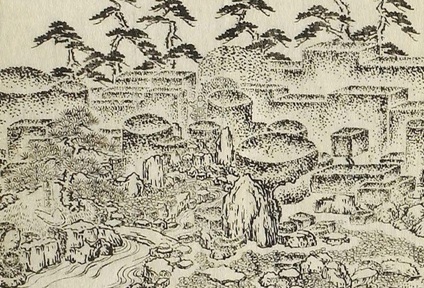
This culminates in the popularly understood description of the ‘modern Japanese garden’ (rather than style) as the synonymous idea of Japanese techniques adapted to ‘the way people live harmoniously with nature and architecture’ in a warmer and less harsh environment. Of course the western seaboard also conveys the idea to us in the prairies of ‘west-coast green’ as a hallmark of what is wonderful to grow and how to grow this greenery.

For more information in print about North America’s Japanese history please see: Greenmakers,
-and visit the Japanese Canadian National Museum: http://www.jcnm.ca
What this means to you, our client, is that the ‘familiar to you from the west coast’ is that landscape maintenance & development is available through our green services as well as refined Japanese garden design, installation and maintenance.
Qualified maintenance excellence knows where a plant should grow to within the site or where it should be reduced too, how this plant fits into the overall design to maximize the clients needs. This Right Tree/Right Place + Right Size decision refers to ‘development’ within the services of garden Maintenance.
In other words maintenance is the art of keeping (maintaining) a degree of tidiness with aesthetic artistry to an area as a constant, and, development maintains or implies improving standards already established in ground-cover, shrub or tree growth, health or aesthetic.
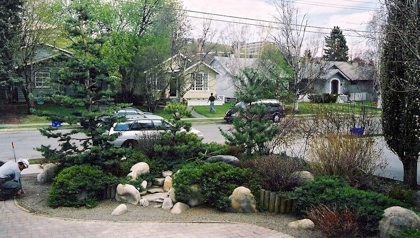
Following the Author’s Intent is the key to developing a landscapes conceptual success for the clients benefit. It is vital, critical for a ‘best result’ that understanding the garden, and each plants purpose is understood before a single stem is cut.
From applying decades of arboriculture experience, design installation with development of garden spaces, and after consultation with the client, Fuzei Gardens & Tree Service Ltd. understands how a plant within a landscape will best function for the clients needs.
Having a firm grounding and long understanding of the Japanese garden and its cultural methods of pruning, alongside bonsai experience makes topiary & espalier a reflexive cultivation technique.
fuzei gardens & tree service ltd. + 403 . 931.3817 edzard@fuzei.com
all rights reserved (c) copyright held by fuzei gardens & tree service ltd. 2011
Fuzei Value:
**Environmentally sensitive, eco-friendly recycling, reusing & repurposing. In Japanese: ‘mitate-mono’,
by example, maximizing natural resources: fine twigs and branches are chipped for mulch, and trunks are re-used for tea house ‘tokonoma’ posts, windows and sleeve fences ‘sode-gaki’.

Practicality also means efficiency: simpler design, cleaner lines that work smarter rather than harder.
eg: design and build gutters around areas so that leaves and debris collects there. In the spring, when the leaves are in soggy layers in the gutter, roll them up like a carpet and toss in the compost bin.
and we are always seeking ways to improve on what has been done before.
Levels of Finish
The easiest to achieve is always a high finish and has the merit of exciting the senses. ‘So’ or rustic, is the most difficult finish level to achieve as it requires the most discerning eye and metaphoric taste to be applied to the dialogue of materials.
In terms of maintenance, Shin is the most expensive to maintain, whereas ‘so’ is the closest to nature and with experience is the least maintenance. So in the landscape has the ability to return to nature if abandoned as the human touch or placement is not noticeable even though the landscape is of manmade origin.
The most evocative and communicative finish is probably ‘gyo’ that combines the manmade finish with the rustic natural finish to achieve results that speak to the environment and to people.
AUTHORS INTENT:
ensure that pruners know the use, reason, and conceptual basis of the plants before pruning, as junipers can be pruned as ‘cliffs’ or as ‘flowing hills’, pine can be pruned for attracting attention, their individual character as are black pines where the bark is important to see and the foliage is to keep the bark alive in a beautiful form, or whether the pine is pruned to be a mountain, to create valleys or ‘float’ above something that should be seen or felt. (pine branch as a framing device, shakkei)
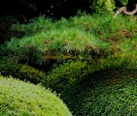
fuzei gardens & tree service ltd. + 403 . 931.3817 edzard@fuzei.com
based in Millarville
service throughout Canada
modern Japanese gardens:
design . construction . maintenance .
aesthetic pruning:
espalier . topiary . tree pruning for beauty & health
practicing fine art employing eco-friendly sustainable solutions maintaining the beauty of Nature in our environs..
all rights reserved (c) copyright held by fuzei gardens & tree service ltd. 2014

